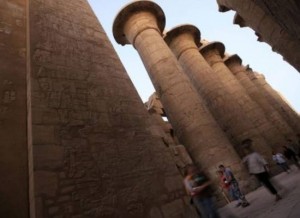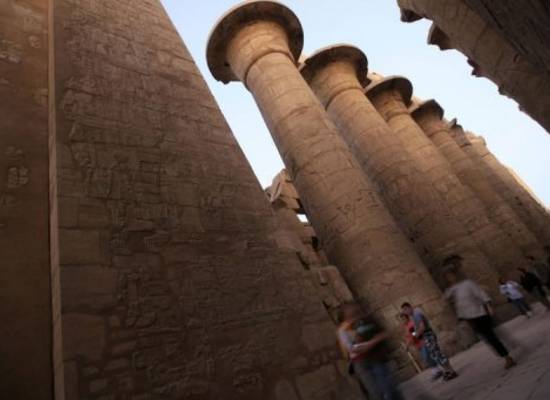
(AFP Photo)
Minister of Antiquities Ahmed Eissa has accused the United Nations Economic Scientific Cultural Organisation (UNESCO) of threatening to declassify six archaeological sites in Egypt, Aswat Masriya reported. The minister said UNESCO’s threat was made because there is a lack of experts in Egypt managing the sites.
Eissa requested additional financial support during a committee meeting on culture, tourism and information at the Shura Council on Monday, asking the Ministry of Finance to raise its budget to help maintain Egyptian antiquities.
The sites under threat, according to Aswat Masriya, include the Great Pyramids of Giza, the Karnak Temple in Luxor, the temples of Abu Simbel, Saint Catherine’s Monastery, Saint Mina’s Monastery and Islamic Cairo.
Abdel Rahman Aaidi, the chairman of the Central Administration for Egyptian Antiquities at the ministry, was quoted saying the threat to Egypt’s heritage sites is “a stain on the conscience of the government” because it shows the government’s lack of interest in the sites.
Aaidi also said the Karnak Temple and Saint Mina’s Monastery were only recently added due to the risk posed by high levels of groundwater. He continued by saying the sites need restoration and maintenance, which Egypt currently is not able to do.
“The inclusion of Egyptian sites on the World Heritage List means Egypt can benefit from UNESCO’s expertise and financing of projects,” Aswat Masriya cited Aaidi. “Therefore removing these sites from the list means Egypt will be deprived of these benefits.”
The UNESCO threat is said to be based on the lack of commitment by the state to the 1972 World Heritage Convention, signed and ratified by 178 countries including Egypt. As part of the agreement, states that have ratified the convention must exert all efforts to preserve their heritage sites.
UNESCO could not be reached for comment.
Egypt’s heritage sites have been plagued by looters and encroachment from local communities. Last month, a protest was held in Dahshur by archaeologists and concerned locals against the encroachment of the community cemetery on the pyramids in the area.
The local cemetery in Dahshur has seen rapid expansion in growth, and has reached the causeway of the Black Pyramid. Archaeologists say the rapid expansion is often used by locals as an excuse to dig for buried artefacts to sell on the black market.
Dahshour is one of seven World Heritage Sites in Egypt.
UNESCO is dedicated to preserving such heritage sites, but in practice it cannot actively intervene as these monuments remain Egyptian property under Egyptian sovereignty.




